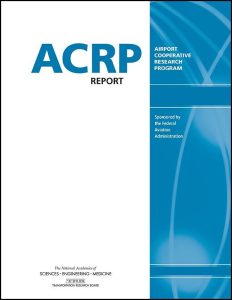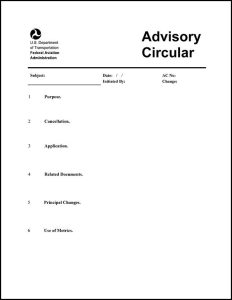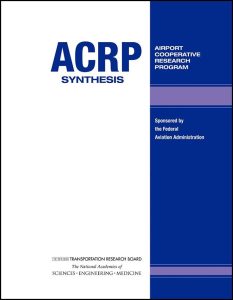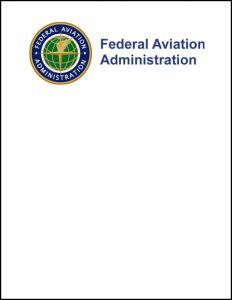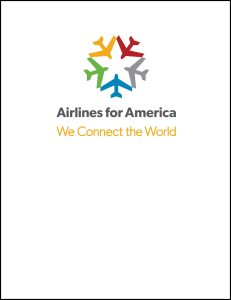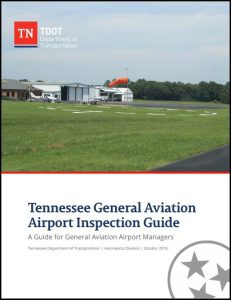To narrow the library of airside resources, use the filter boxes or airport map below or search box above.
Click an item below to expand.
Resources Matching Your Search
2019
ACRP Research Report 192 is designed to assist airports that are considering self-providing fueling services or currently providing them directly to their customers. The report includes a methodology to help evaluate whether an airport should or should not provide fuel service, a checklist of action items required for providing fuel service, and a sample request for proposals to solicit bids from fuel suppliers. The report also addresses a wide range of topics, including feasibility evaluations for new or improved fueling facilities, fuel pricing and marketing strategies, and organizational considerations when starting or expanding a fueling service.
2021
This advisory circular (AC) contains specifications and guidance for the storage, handling, and dispensing of aviation fuel on airports. It also provides standards and guidance for the training of personnel who conduct these activities.
2017
This standard outlines vital safety provisions for procedures, equipment, and installations to protect people, aircraft, and other property during the ground fuel servicing of aircraft using liquid petroleum fuels. This is a paid resource available in print for $54.50 and in PDF $58.50.
2016
The purpose of ACRP Legal Research Digest 28: Operational and Legal Issues with Fuel Farms is to provide a practical guide to help airport sponsors and legal professionals (1) understand the basic legal and operational issues presented by on-airport fuel distribution systems and (2) evaluate an appropriate ownership and management model to address those legal and operational issues.
2015
ACRP Synthesis 63 explores airport fueling system operations at all sizes of airports. The report describes fueling standards and regulations as well as common operations and components, and it serves as a reference for a number of fueling processes and procedures. On-airport fueling systems and components are the main focus of the report.
2015
The purpose of the ACI Apron Safety Handbook was to update and expand Chapter 2 of the Airside Safety Handbook (fourth edition). Aprons are the most congested and busiest areas of an airport, with complex activities that are carried out under severe space and time constraints. This handbook provides best practices for planning and designing apron layouts and facilities. It also provides standard operational practices for safe apron operations as well as mitigation and prevention measures for maintenance and construction activities on aprons. This resource is available from the ACI store for $125 for members and $1,000 for non-members.
2020
This desk reference provides explanatory guidance for environmental impact analysis performed to comply with Council on Environmental Quality (CEQ) Regulations for Implementing the Procedural Provisions of the National Environmental Policy Act (CEQ Regulations) (40 Code of Federal Regulations (CFR) parts 1500-1508); U.S. Department of Transportation (DOT) Order 5610.1C, Procedures for Considering Environmental Impacts; and Federal Aviation Administration (FAA) Order 1050.1F Environmental Impacts: Policies and Procedures.
2019
This resource provides guidance for the safe storage and distribution of jet fuel at airports, as currently practiced in the commercial aviation industry. It also includes forms that can be used to record the performance of tests and inspections. This is a paid resource at $304 for a single-user membership or $467 for non-members. The cost is $661 for a multiuser membership or $992 for non-members.
2015
This advisory circular (AC) provides guidance for airport sponsors in the selection and engagement of architectural, engineering, and planning consultants. It also discusses services that normally would be included in an airport grant project, types of contracts for these services, contract format and provisions, and guidelines for determining the reasonableness of consultant fees.
2018
This state resource provides airport inspectors and airport managers guidance on the standardized execution and conduct of general aviation inspections in accordance with applicable state and federal regulations governing the issuance of State General Aviation Public Use Airport Licenses.
2019
ACRP Report 16, second edition, is designed to help airport practitioners, owners, operators, managers, and policymakers of small airports, who may have varying degrees of experience and backgrounds, to fulfill their responsibilities in such areas as financial management, oversight of contracts and leases, safety and security, noise impacts, community relations, compliance with federal and state obligations, facility maintenance, and capital improvements. The first edition has been edited and reformatted for currency, relevance, and usability and updated with additional information and new subject areas (e.g., unmanned aircraft systems, geographic information systems, digital notices to airmen, social media, and federal and state obligations). Also, hyperlinks to many of the documents and resources mentioned in this report, such as ACRP publications, industry sources, and sample checklists, have been collected into ACRP WebResource 6: Resources for Managing Small Airports.
2007
This advisory circular (AC) provides guidance to airport sponsors that develop environmental management systems (EMS). It provides guidance to airport sponsors on the needed parts of an EMS.
2011
ACRP Report 48 is designed to help airport operators and planners measure the impact of changes in jet fuel price on supply and demand for air service at commercial service airports. The report includes background research, a computer model, and a user manual. The output of the model can ultimately be used to help evaluate the impact of uncertainty on airport development and finance. Applying specific input parameters, the model, embedded in a user-friendly program, allows airport planners and managers to assess how fuel, economic, and other uncertainties may affect their airport and to test the sensitivity of varying assumptions about key drivers of airport activity.
2013
TRB conducted a webinar that featured research conducted by ACRP on providing airport operators and planners with tools and methodologies designed for incorporating uncertainty into air traffic and fuel price forecasting methods. The ACRP reports presented in this webinar will provide airport managers, operators, and planners with techniques for measuring and characterizing the uncertainty inherent in trend-based projections of requirements of airport users and stakeholders.
2019
ACRP Web-Only Document 41 analyzes the data compiled in ACRP Web-Only Document 35, which captures the current status of knowledge to reduce carbon dioxide emissions using sustainable alternative jet fuels (SAJF). The results of this analysis were used to develop a simplified tool that will allow airports to easily estimate emission reductions from use of SAJF at their airport.
2020
Sustainable Airport Manual includes measures and metrics to evaluate compliance, standards and specifications, project evaluation checklists, and a Green Airplane Rating System that gauges each project's ability to meet or exceed contractual obligations to incorporate sustainable initiatives. This manual is a living document that includes emerging technologies, state-of-the-art design, thought-provoking principles, along with lessons learned from 15 years of implementation experience.
